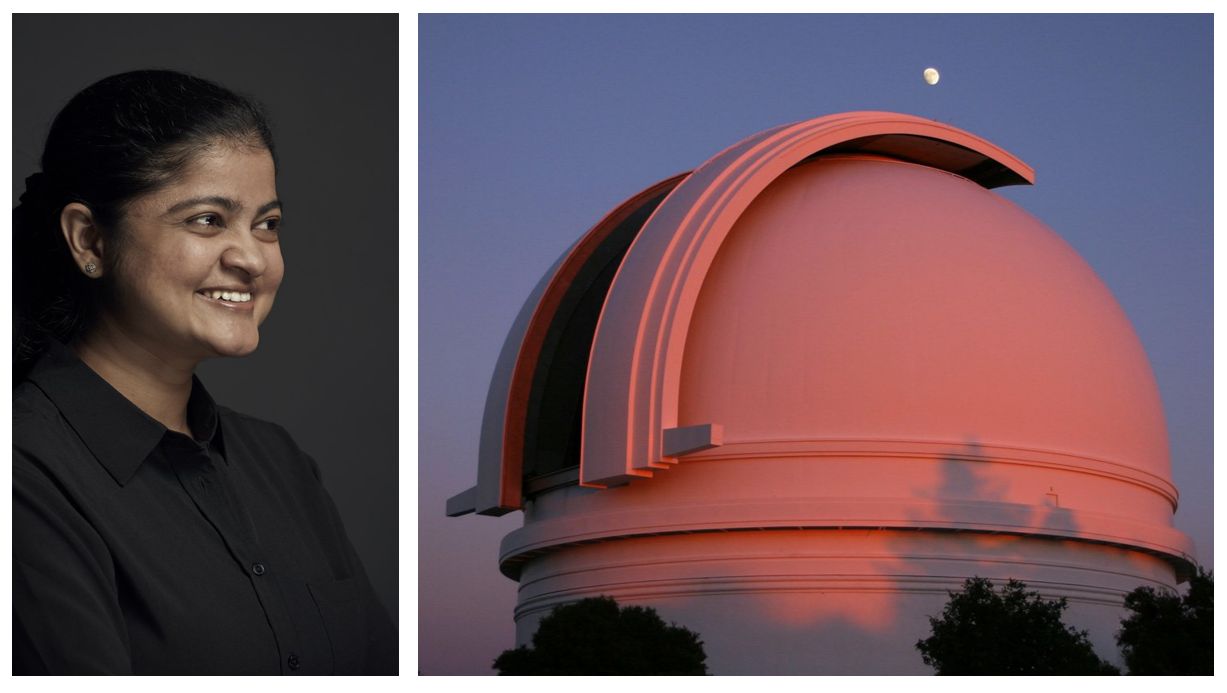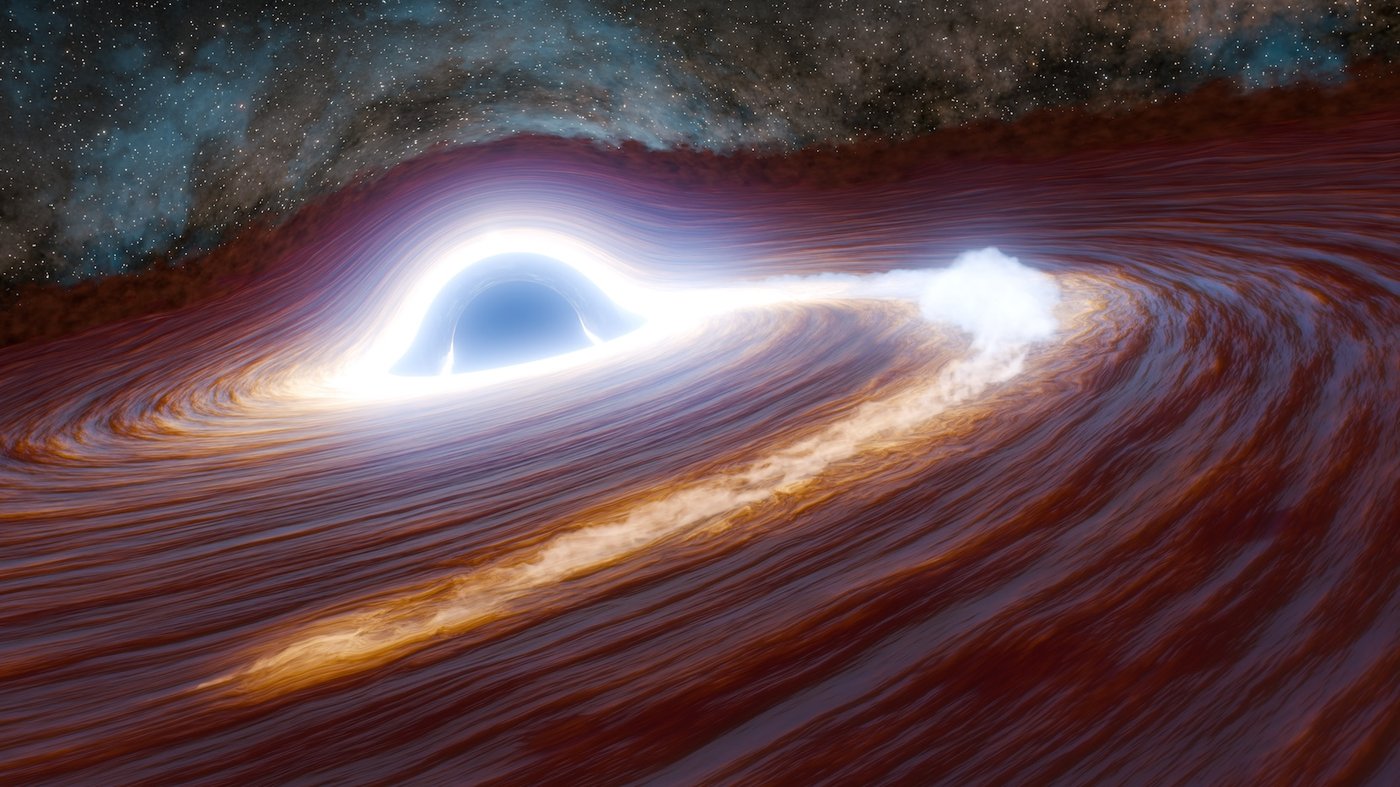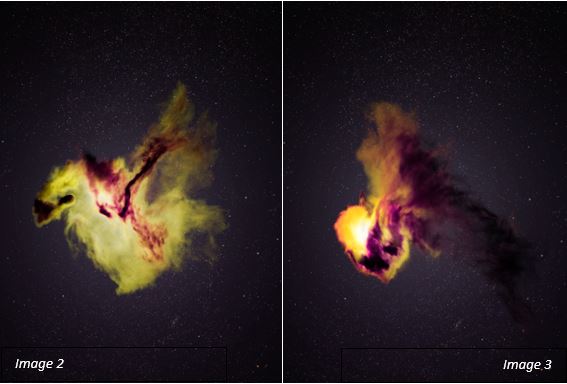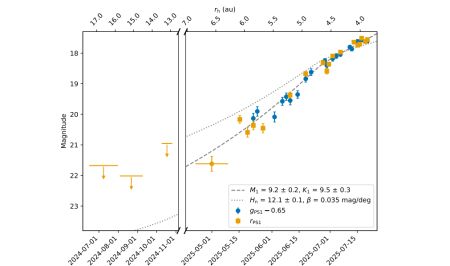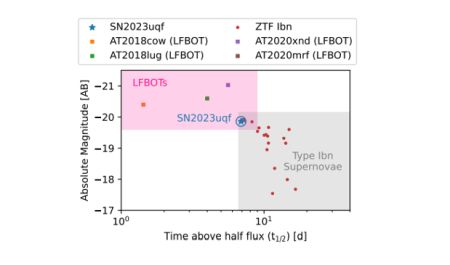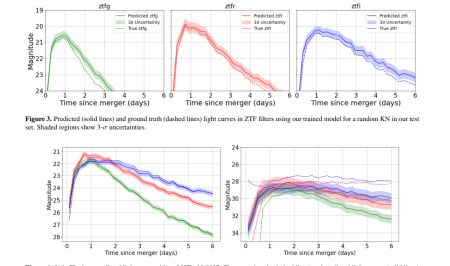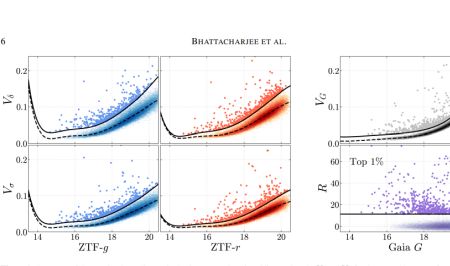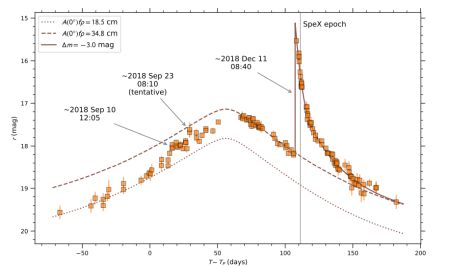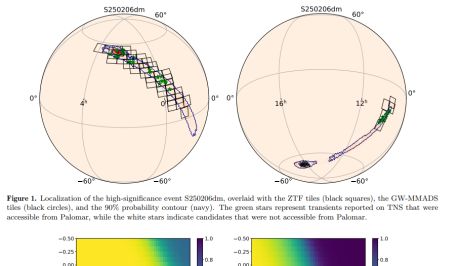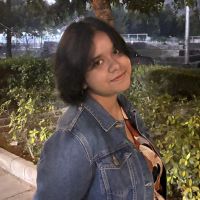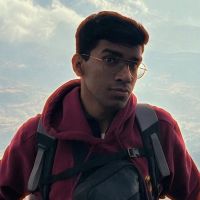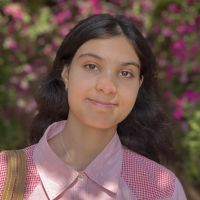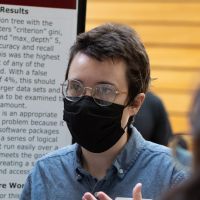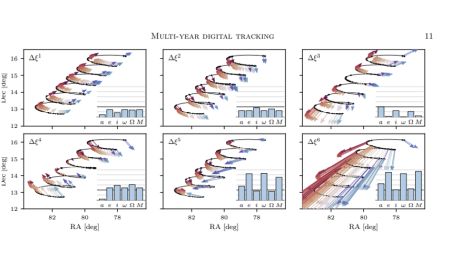The ZTF Scientific Steering Committee invites proposals to the “ZTF Experiments” program, designed to explore one or more novel aspects of ZTF scientific/technical capabilities by employing non-standard field selection, cadence, and filter choice to pursue specific scientific questions. Non-standard in this context refers to ZTF observing configurations that are distinct from those in the standard survey, which observes the joint ZTF+LSST footprint at 1-day cadence in g-band, r-band, and i-band for 30s each.
Public Data Releases in ZTF3
ZTF continues science observations in 2025 and 2026 thanks to extended funding by the National Science Foundation. There will be two yearly public releases that will become available in the January 2026 and 2027. Public releases are announced on our website and soial media X account @ztfsurvey.
Science Highlights
Black Hole Flare is Biggest and Most Distant Seen
ZTF has co-discovered the most distant and brightest flare from a black hole eating away a massive star. The event has taken place in the distant universe 10 billion light years away and at its brightest, it release the energy equivalent to 100 trillion suns.
Press ReleaseZTF catches a never-before-seen flare of a supernova
A large team of astronomers, led by ZTF partners at the Northwestern university stumbled upon a unique explosion of a supernova from a massive star back in Sept 2021. After extensive analysis of the supernova using data from multiple telescopes around the world, the astronomers believe they have seen for the first time the inner layers of a dying star.
Press ReleasePrediscovery activity of a new interstellar object
The authors report on the prediscovery observations and constraints of the new interstellar comet 3I/2025 N1 (ATLAS), made by the Zwicky Transient Facility (ZTF), for the inbound leg of the comet out to a heliocentric distance of rh=17au, or approximately a year before its discovery.
Interacting supernova coincident with a high energy neutrino
Astrophysical high-energy (TeV-PeV) neutrinos were first discovered in 2013, but their origin remains largely unknown. In this paper, authors present SN 2023uqf, a supernova found in coincidence with high-energy neutrino IC231004A, as part of a systematic optical follow-up program with the Zwicky Transient Facility.
A machine learning tool to predict kilonova light curves
The authors have developed a public tool to predict kilonova light curves using simulated low-latency alert data from the International Gravitational Wave Network during observing runs 4 (O4) and 5 (O5). It uses a bidirectional long-short-term memory (LSTM) model to forecast kilonova light curves from binary neutron star and neutron star-black hole mergers in ZTF and Rubin's LSST filters. The models are publicly available and can help plan follow-up of candidate events discovered by current and next-generation public surveys.
ZTF search for circumstellar debris transits in white dwarfs
Bhattacharjee, Soumyadeep et al.,
White dwarfs (WDs) showing transits from orbiting planetary debris provide significant insights into the structure and dynamics of debris disks, which are eventually accreted to produce metal pollution. This is a rare class of objects with only eight such reported systems. In this work, the authors perform a systematic search for such systems within 500 pc in the Gaia-eDR3 catalog of WDs using the light curves from the Zwicky Transient Facility (ZTF) and present six new candidates.
Studying ice water in 243P/NEAT and other comets
ZTF partners from the University of Maryland who study solar system bodies have observed several comet outbursts which provide scientists with the opportunity to study the properties of water ice - a fundamental building block in solar system objects.
ZTF observetions of a neutron star merger candidate
Authors present the ZTF search in response to S250206dm, a bona fide event with a false alarm rate of one in 25 years, detected by the International Gravitational Wave Network (IGWN). Although the event was significant, the nature of the compact objects involved remains unclear, with at least one likely neutron star. ZTF covered 68% of the localization region and no likely optical counterpart was identified. The paper provides details about the ZTF strategy, potential candidates, and the observations that helped rule out candidates, including sources circulated by other collaborations.
ZTF Faces
Every summer we welcome a number of undergraduate students who carry out a summer research project with members of our team.
Shreyashi Manna
(Shiv Nadar Uni)
Summer project: Photometric and morphological behavior of near-Sun asteroids
Read more
Samridh Tiwari
(IIT-Bombay)
Summer project: Studying lightcurves of fast moving near-Earth asteroids with ZTF
Read more
Amaliya Atamalibekova
(Cornell University)
Summer project: Search for gamma-ray emission from broad-lined Ic supernovae
Read more
Community science with ZTF
We highlight scientific publications from individuals and groups outside of the ZTF partnership that use ZTF public data
Multi-year stacking searches for solar system bodies
Geringer-Sameth, Alex ; Golovich, Nathan ; Iwabuchi, Keita
[Abstract]
Digital tracking detects faint solar system bodies by stacking many images along hypothesized orbits,
revealing objects that are undetectable in every individual exposure. Previous searches have been
restricted to small areas and short time baselines. We present a general framework to quantify both
sensitivity and computational requirements for digital tracking of nonlinear motion across the full sky
over multi-year baselines. We start from matched-filter stacking and derive how signal-to-noise ratio
(SNR) degrades with trial orbit mismatch, which leads to a metric tensor on orbital parameter space.
The metric defines local Euclidean coordinates in which SNR loss is isotropic, and a covariant density
that specifies the exact number of trial orbits needed for a chosen SNR tolerance. We validate the
approach with Zwicky Transient Facility (ZTF) data, recovering known objects in blind searches that
stack thousands of images over six years along billions of trial orbits. We quantify ZTF’s sensitivity
to populations beyond 5 au and show that stacking reaches most of the remaining Planet 9 parameter
space. The computational demands of all-sky, multi-year tracking are extreme, but we demonstrate
that time segmentation and image blurring greatly reduce orbit density at modest sensitivity cost.
Stacking effectively boosts medium-aperture surveys to the Rubin Observatory single-exposure depth
across the northern sky. Digital tracking in dense Rubin observations of a 10 sq. deg field is tractable
and could detect trans-Neptunian objects to 27th magnitude in a single night, with deep drilling fields
reaching fainter still.
ZTF is supported by the National Science Foundation and a collaboration including the following universities
: University of
Maryland, College Park, USA;
Drexel University, USA; Cornell University, USA; University of California, Berkeley;
University of North Caroline Chapel Hill, USA;
Institute of Science and Technology, Austria;National Central University, Taiwan;
German Center for Astrophysics (DZA), Germany;
IPAC/Caltech, USA; Caltech, USA. Operations are conducted
by COO, IPAC and University of Washington.
Any opinions, findings, and conclusions or
recommendations expressed in this material are those of the
author(s) and do not necessarily reflect the views of the National Science Foundation.

